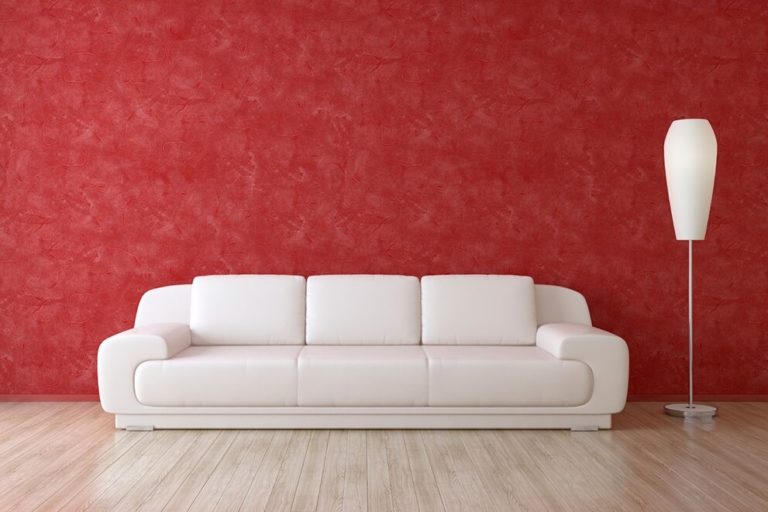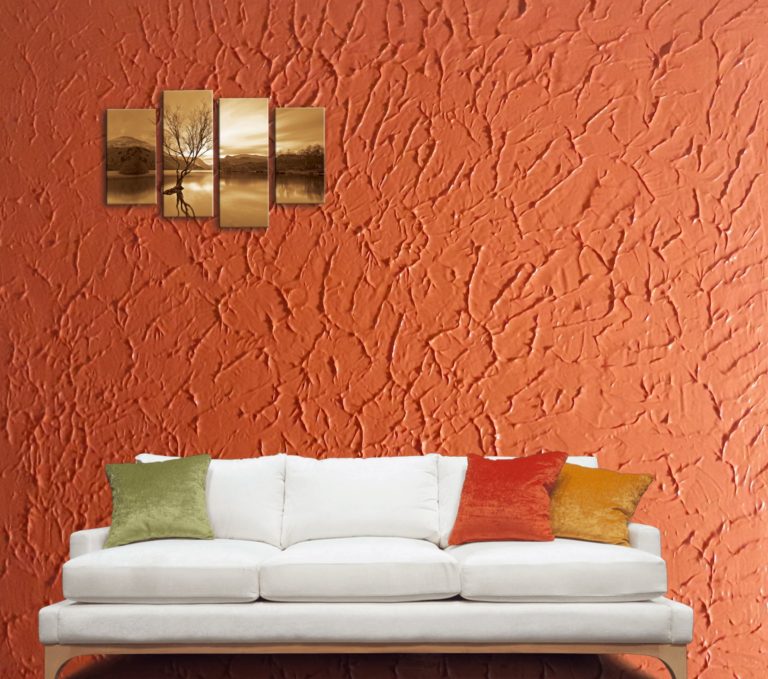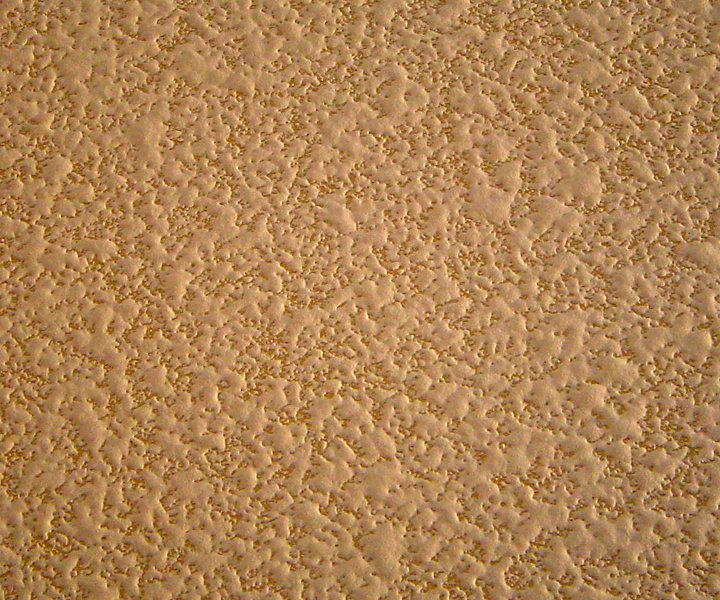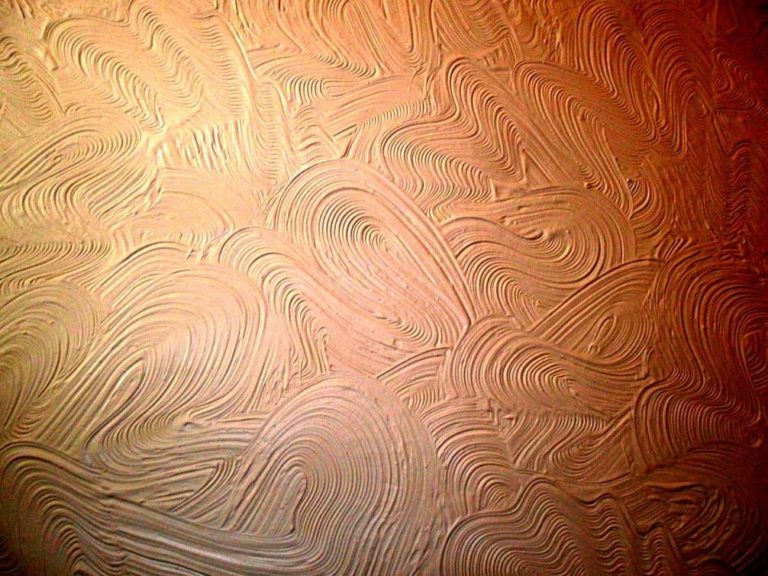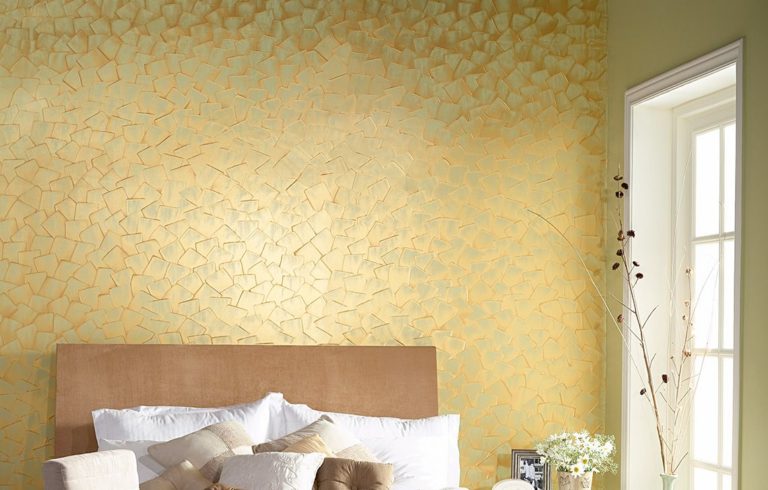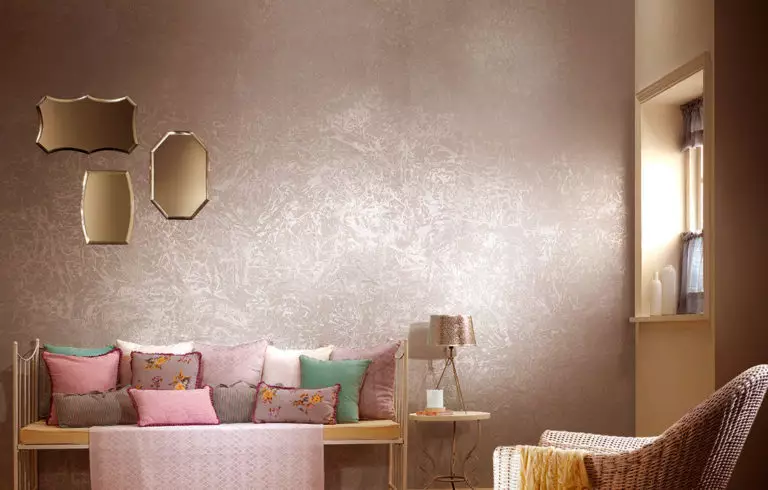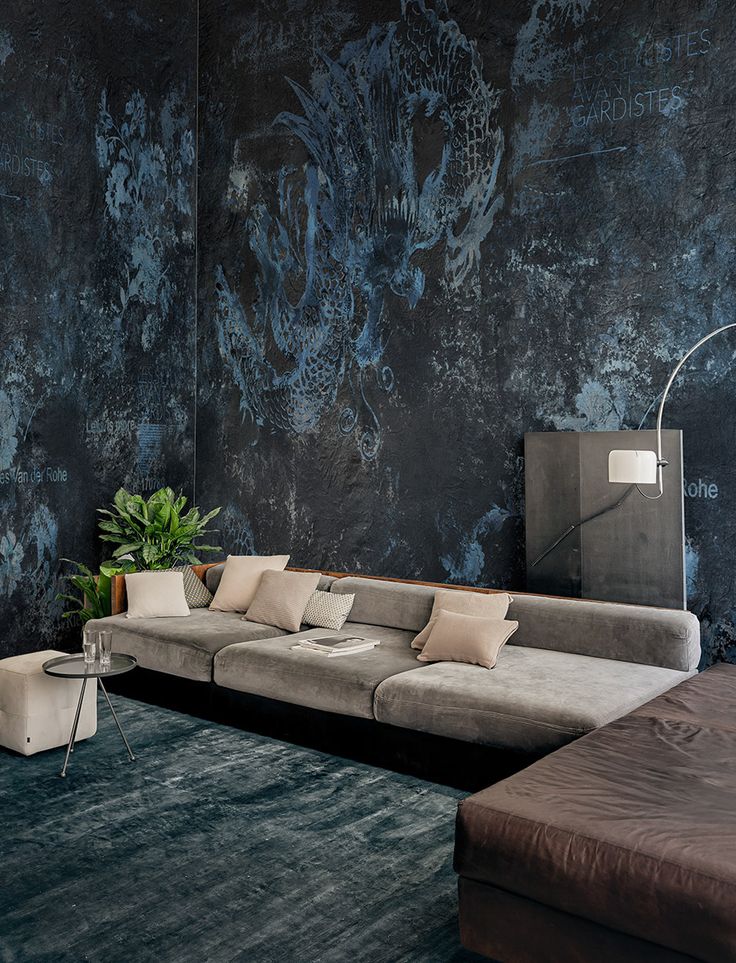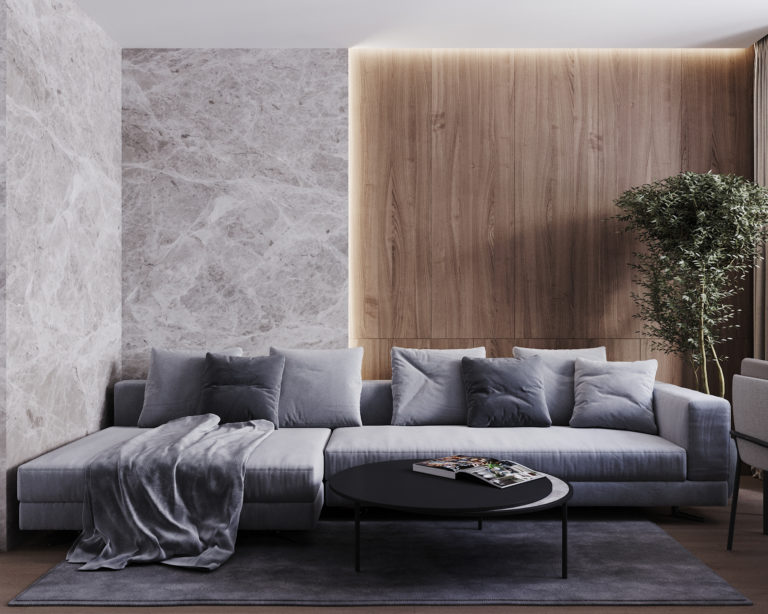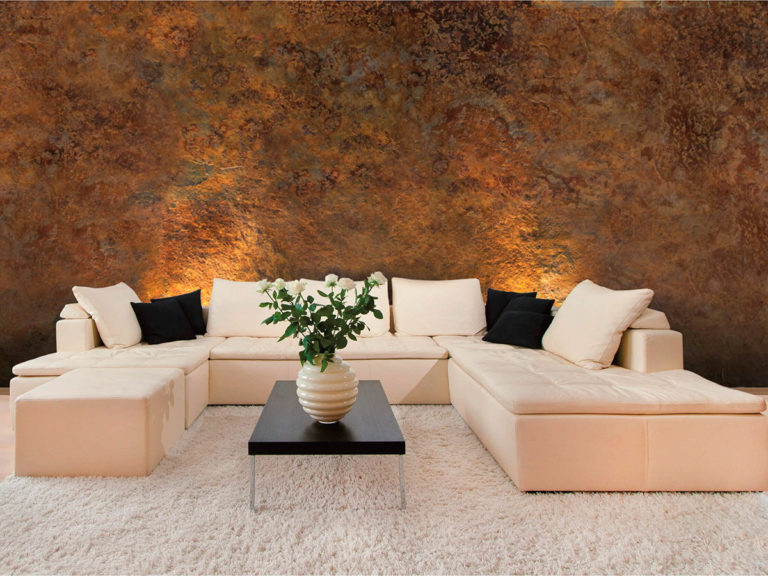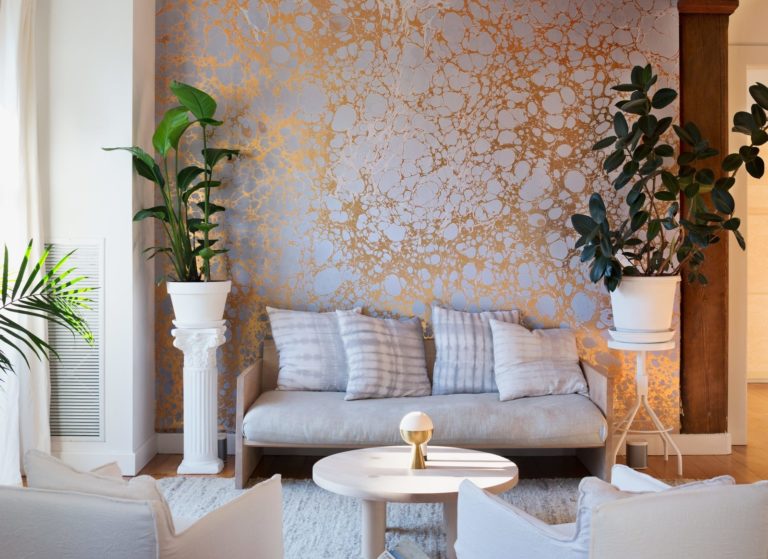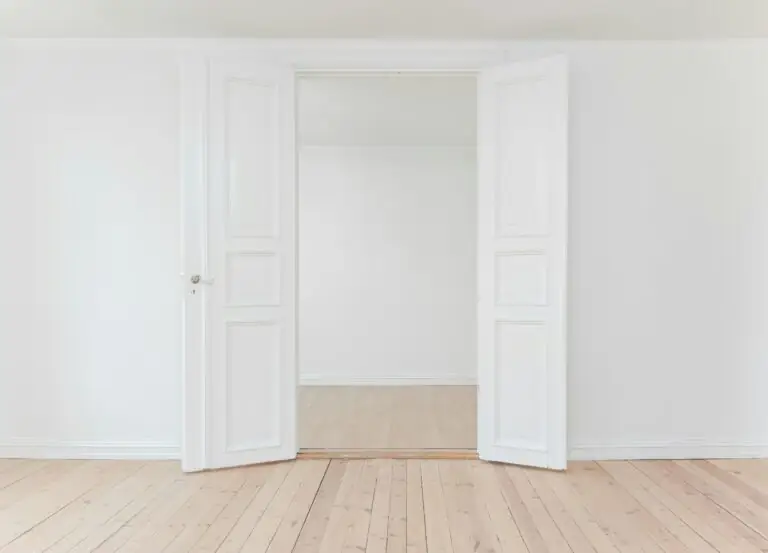Wall texture: types, how to create them, and design ideas

In an ideal interior, every detail is essential, but the design of the base surfaces still plays a key role. The atmosphere, tone, mood, focus – it all starts with a well-chosen and executed floor, ceiling, and wall covering. Perhaps, it is on the walls that it is worth dwelling in more detail.
When thinking about how to decorate the walls in a room, we often concentrate on the color and pattern of the material. This is quite logical, but if you still want to use fewer color spots and at the same time provide individuality and expressiveness to the house design, you should take a closer look at wall texture.
This coating can hardly be considered new and revolutionary – it has been used for more than a decade. However, as the popularity of minimalism grew, wall texture was forgotten. Over the past few seasons, the trend has been reversed, and this solution is again becoming more and more in demand. If you are interested in adding uniqueness to your interior thanks to the unique texture of the walls, let’s take a closer look at the coating features and how to apply it.
Wall texture: why you should use it
The range of wall coverings today is vast, so the choice in favor of texturing the walls is usually made based on the following indisputable arguments:
If all these arguments are weighty for you, and you can easily add a couple of your own to them, you can safely look for a suitable texture. The most important thing is to decide on its type, select all the necessary tools, and study its application technique if you plan to act on your own.
Wall texture coating types
The composition, giving a spectacular texture, consists of a homogeneous and plastic main filler, as well as larger particles, due to which the desired relief is created. Today 4 types of material are produced:
You can purchase all these compositions ready-made. However, in some cases, craftsmen prefer to prepare textured mixtures independently. You can make wall texture based on ordinary putty using PVA glue, primer, gypsum, stone and marble chips, acrylic paint, or silver mixed in strictly defined proportions. If you have experience in construction, then such experiments are quite acceptable.
Tools selection for applying the wall texture
So, if you still think about applying the coating yourself, you have two ways – use a texture roller or special tools to create a unique pattern. However, they are not the only ones that are useful to you – as a rule, the list of tools necessary for the tools includes:
Basically, you do not need to study all this closely if you plan to use the services of professionals. However, knowing the essential tools will allow you to determine how experienced your hired specialist is.
Wall texture types and design ideas
So, having dealt with the technical issues, you can study in more detail something more pleasant – namely, the types of patterns and textures that special compositions are capable of creating. Today their number exceeds three dozen, but we will talk about the most popular of them.
Comb
The comb is one of the most popular textures for finishing mixes. It got its name from the long and thin lines on the surface of the drywall, giving the impression that a comb with frequent or sparse teeth was drawn over the not yet dried coating. At the same time, it is not necessary to lead the lines directly – they can be made in the form of an arc, zigzags, concentric circles, and even a “fish scale” – the latter option is especially popular in art deco, eclectic or neoclassical interiors.
Popcorn
This highly effective finish dates back to the 1960s. Then thousands of home and apartment owners were captivated by the ability of “popcorn” to hide any imperfections and unevenness of the wall, the absence of the need to paint the walls, as well as excellent soundproofing properties, which is why it was also called the “acoustic texture”. All this makes such wall texture an ideal solution for bedrooms, as well as living rooms, where the owners like to listen to music and regularly organize film screenings.
The composition of “popcorn” implies a combination of a fundamental binder component with water, polystyrene, and polystyrene foam balls, and therefore requires a special application technique – using a spray gun and a special compressor. In addition, it is crucial to consider that such drywall is complicated to remove from the walls, so before choosing it, carefully weigh the pros and cons.
Orange peel
It is not in vain that this wonderful texture has become one of the most widespread, and not only in the design of home interiors but also in the decoration of office premises. The appearance of a wall covered with such wall texture is clear from the name – it is a relatively flat surface, covered with tiny dots and potholes. This texture looks laconic and restrained, but at the same time, quite expressive, which makes it almost universal.
The application of the “orange peel” texture is carried out in several stages:
Venetian plaster finish
This type of texture was created several centuries ago. Back in the 16th century, walls in Venetian palaces were covered with an incredibly complex decorative mixture. Over time, this decoration was recognized as a spectacular artistic technique and even singled out by some experts as a separate art form. Even today, this texture and technique is still considered high-class and is used in elite design projects.
The recipe for authentic Venetian plaster has long been lost, but today, experts have tried to recreate the composition as closely as possible. In modern coatings, a special putty, lime, coloring pigment, as well as marble, malachite, and quartz chips are used. In addition, a unique technique of its application is used with a relatively large number of stages:
The resulting surface is amazingly smooth, which, combined with beautiful stains, provides the walls with a highly sophisticated look and various color transitions and texture variations. Such a base will come in handy for an elegant classic, as well as any other interior that implies genuine chic.
Knockdown
The knockdown texture is somewhat similar to orange peel. Indeed, the technique of mixing the components and applying the mixture is about the same. However, the texture differs in greater depth and fragmentation with a more thorough polishing, carried out with a drywall knife or spatula. Such processing gives the walls a more sophisticated and traditional look, adds coziness and harmony. Today, designers recommend using it in almost any home environment – from hallways to living rooms and dining rooms.
Sand swirl
A lovely texture, reminiscent of the pattern of a sandy shore washed by the sea wave. With the right shade selection, you will get an extremely effective base that can even be used to decorate a child’s room.
Such a texture is rather complicated and requires careful adherence to technologies at each of the following stages:
Slap brush
This texture is considered one of the most natural, as it resembles careless staining with regular paint. It looks pretty organic in any interior, and therefore it is often used for a base in styles such as minimalism and modern. You can apply it in the following sequence:
In the process of creating textures, professionals usually act quite creatively and with a share of carelessness – this gives the design a unique charm.
Spanish lace
Designers especially love this texture for its ability to combine decorative and practical properties. Such wall texture looks incredibly beautiful due to specially cut patterns and allows you to hide defects on the wall surface.
In this case, the drywall is applied to the wall surface with a roller, brush, or spray gun in a moderately thin layer, and then the intended pattern is made on it with a thin drywall knife. Then the drawing is painted over in the desired tone, and after drying, the whole process is repeated. The resulting pattern really resembles exquisite lace on Spanish mantilla, which gives the interior a confident chic.
Wall texture: Conclusions + Photo gallery
Textured walls – fifty percent of success in creating a unique interior. If you do not have time to look for too complex color and decorative solutions, such a technique will be the most comfortable, economical, and effective option.

